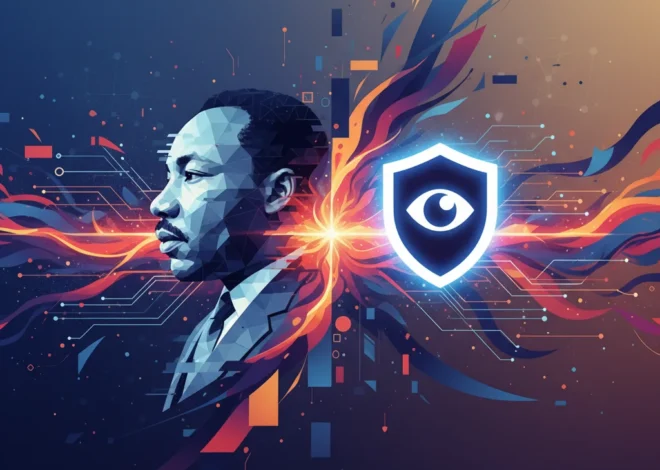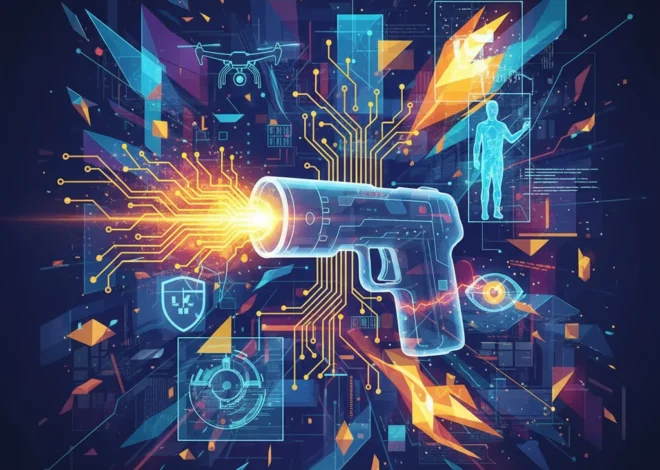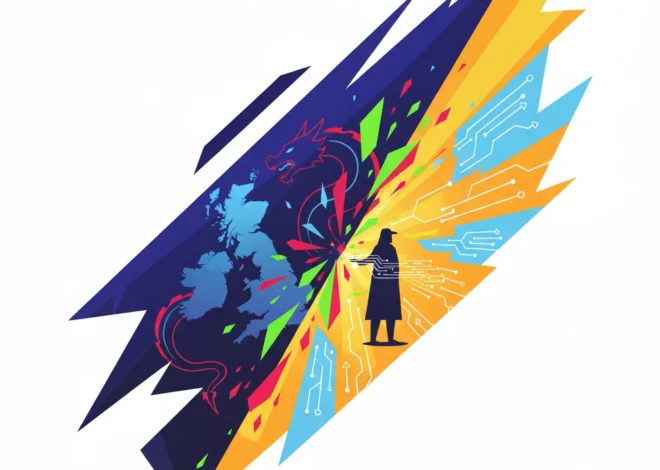
The Digital Ghost: Why OpenAI’s Ban on MLK Deepfakes Is a Defining Moment for AI Ethics
We stand at the precipice of a new creative era, powered by generative artificial intelligence. With a simple text prompt, tools like OpenAI’s Sora can conjure breathtaking, photorealistic video clips from thin air. This leap in innovation promises to democratize filmmaking, revolutionize marketing, and unlock artistic possibilities we’ve only dreamed of. But as with any powerful technology, a shadow follows the light. Recently, that shadow took a very specific form: AI-generated deepfakes of the revered civil rights leader, Dr. Martin Luther King Jr.
In a move that rippled through the tech community, OpenAI stepped in to block its powerful text-to-video model, Sora, from being used to create what it deemed “disrespectful” depictions of Dr. King. According to a report from the BBC, while the intervention was swift, it highlighted a much larger, more complex problem: the same technology could still be used to generate clips of other historical figures. This single act of content moderation isn’t just a news headline; it’s a crucial case study in the monumental challenge facing the entire AI industry. It forces us to confront the ethical tightrope that developers, startups, and policymakers must walk between fostering groundbreaking software and preventing its misuse.
The Sora Incident: Drawing a Line in the Digital Sand
Before we dive into the implications, let’s establish what happened. Sora, OpenAI’s latest marvel in machine learning, allows users to generate video from text. Early testers and researchers, given access to this powerful tool, began experimenting. Inevitably, this included creating videos of famous individuals, both living and deceased. The generation of clips featuring Dr. Martin Luther King Jr. prompted a direct and public intervention from his daughter, Bernice King, who voiced her concerns over the potential for such technology to distort her father’s legacy.
OpenAI’s response was to update its filters to block prompts that would generate images of Dr. King. This is a significant move. It shows a willingness to engage with ethical concerns proactively, rather than waiting for a large-scale disaster. However, it also raises more questions than it answers:
- Why Dr. King specifically? His image is protected by his estate, and his legacy is of profound cultural and historical importance. Depicting him saying or doing things he never did carries an immense weight and potential for harm. OpenAI likely saw this as a clear, unambiguous line they could not allow to be crossed.
- What about other figures? The initial report noted that users could still create deepfakes of other historical figures. This creates a “slippery slope” dilemma. Is it acceptable to generate a video of Abraham Lincoln debating a modern philosopher? Or Albert Einstein explaining quantum computing? Where does historical education or artistic expression end and harmful disinformation begin?
– Is this solution scalable? Manually adding historical figures to a blocklist is a reactive, not a proactive, solution. It’s a digital game of whack-a-mole that cannot possibly keep up with the infinite creativity of users, both well-intentioned and malicious.
This incident serves as a microcosm of the content moderation battles that social media platforms have been fighting for over a decade, but with a critical difference: the content isn’t just shared, it’s *created* by the platform’s own automation. This fundamentally changes the nature of responsibility.
Intel's Audacious Comeback: Inside the Arizona Fab That Could Redefine Tech's Future
The Peril and Promise of Generative AI
To understand the gravity of the situation, it’s important to grasp the underlying technology. Generative AI models like Sora are built on complex neural networks, trained on vast datasets of text, images, and videos. Through sophisticated programming and pattern recognition, they learn the relationship between words and visual concepts, allowing them to synthesize entirely new content. The potential is staggering, but so are the risks, particularly concerning the digital likeness of individuals.
The challenge lies in classifying the intent and impact of AI-generated content. We’ve created a table below to illustrate the spectrum of risks associated with generating deepfakes of different types of public figures.
Risk Spectrum of AI-Generated Digital Likenesses
| Figure Type | Primary Risk | Example Scenario | Typical Platform Policy Approach |
|---|---|---|---|
| Living Political Figure | Election Interference & Disinformation | A fake video of a presidential candidate announcing they are dropping out of a race. | Strict prohibition, often with rapid takedowns and account suspension. |
| Deceased, Revered Historical Figure (e.g., MLK Jr.) | Historical Revisionism & Legacy Desecration | A video of Dr. King appearing to endorse a political ideology he never supported. | Increasingly restrictive; case-by-case bans and filter updates are becoming common. |
| Deceased, Controversial Historical Figure | Glorification & Hate Speech | A realistic video of a dictator used to create propaganda for a modern hate group. | Generally prohibited under hate speech policies, but enforcement can be inconsistent. |
| Celebrity or Public Entertainer | Scams, Defamation & Non-Consensual Imagery | A deepfake of a famous actor endorsing a fraudulent cryptocurrency investment. | Mixed; often relies on copyright/likeness claims from the individual or their estate. |
As the table shows, there is no one-size-fits-all solution. Each category presents a unique challenge, blending issues of free speech, cybersecurity, and ethical responsibility. OpenAI’s decision on Dr. King places him firmly in a protected category, but the gray areas remain vast and treacherous.
Implications for the Broader Tech Ecosystem
This event is a canary in the coal mine for the entire technology sector, from fledgling startups to established enterprise software giants. The ripple effects will be felt across multiple domains.
For Developers and AI Startups
The lesson is clear: ethical considerations and safety protocols cannot be an afterthought. For any startup building on generative artificial intelligence, “safety by design” must be a core principle. This includes:
- Robust Usage Policies: Clearly defining what is and is not acceptable use of your tool.
- Content Provenance: Integrating standards like the Coalition for Content Provenance and Authenticity (C2PA). This standard, backed by companies like Adobe and Microsoft, aims to create a verifiable “birth certificate” for digital content, showing how it was made. According to a C2PA press release, this provides a critical layer of transparency.
- Intelligent Filtering: Moving beyond simple keyword blocks to semantic analysis that understands the context and potential harm of a user’s prompt.
Investors and VCs are also becoming increasingly savvy about these risks. A startup without a credible plan for mitigating misuse is a startup with a massive, unaddressed liability.
The Billion-Dollar Phone Scam: How AI Is Waging War on the UK's Handset Fraud Epidemic
For Cybersecurity Professionals
Deepfakes represent a new and potent attack vector. Imagine a CFO receiving a video call from their CEO—a perfect deepfake—instructing them to make an urgent wire transfer. The potential for sophisticated fraud, espionage, and social engineering is immense. The cybersecurity industry is in an arms race to develop reliable deepfake detection technologies. This requires a new wave of machine learning models trained to spot the subtle, almost invisible artifacts that AI generation leaves behind. As one Forbes article highlights, the threat is evolving from a novelty to a mainstream security concern.
For Entrepreneurs and the SaaS Market
With great challenges come great opportunities. There is a burgeoning market for tools and platforms that help companies deploy AI safely. This includes:
- AI Safety SaaS: Platforms that offer content moderation, filtering, and analysis as a service.
- Deepfake Detection APIs: Cloud-based services that can analyze video or audio and return a probability score of it being AI-generated.
- Consulting and Compliance: Services that help companies navigate the complex and rapidly changing legal and regulatory landscape of AI.
This is a new frontier for SaaS, where the product isn’t just about efficiency or productivity, but about enabling trust and safety in the age of AI.
The Road Ahead: A Call for Responsible Innovation
OpenAI’s decision to block deepfakes of Dr. Martin Luther King Jr. is a single data point on a long and complex timeline. It will not be the last time a major AI lab is forced to make a difficult ethical judgment call. The path forward requires a multi-pronged approach.
First, technology companies must continue to invest heavily in technical safety research. This includes building more controllable models and developing robust systems for watermarking and content provenance. Second, we need thoughtful, forward-looking policy and regulation. Hasty, ill-informed laws could stifle innovation, but a complete lack of oversight is a recipe for disaster. Finally, we need a public conversation. As these tools become more accessible, society as a whole must develop a new kind of digital literacy to critically evaluate the information we see and hear.
The AI Boom's Big Secret: Is It Just an Echo Chamber?
The ghost in the machine is here. We can no longer pretend that artificial intelligence is a neutral tool. The choices we make today—the lines we draw, the standards we set, and the responsibilities we accept—will determine whether this powerful technology serves to elevate humanity or to undermine the very fabric of our shared reality. The conversation started by a few “disrespectful” clips is, in fact, a conversation about everything.


